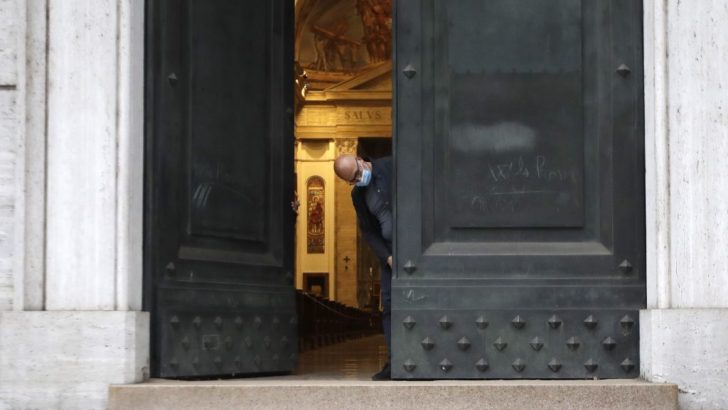“I thought my first cappuccino after 54 days was amazing, but being at Mass after 10 weeks was even better,” a Roman friend said this week. Churches in the eternal city were re-opened for public Masses this week after a long Lent. “It finally felt like Easter,” my friend wrote.
Italy has been devastated by coronavirus. At the time of writing, 32,007 Italians have died of Covid-19 – but many people fear that the real figure may actually be double that.
The Italian hierarchy worked in close partnership with the civil authorities to ensure that the churches could open safely on May 18. Teams from the army sanitised the churches and physical distancing is being observed in the churches.
Gatherings
Is it too soon? Public health officials evidently think not. The bishops in Italy have not moved any farther than they have been permitted by the civil authorities. The same is true in other European countries.
A French court ruled this week that the authorities must let worshippers start going back to Mass again next Tuesday. It said that since France had permitted gatherings of ten or more people for social reasons, the ban on public Masses was “disproportionate in nature” and caused “damage that was seriously and manifestly illegal”.
Last week COMECE – the commission of the bishops’ conference of Europe – warned that the ongoing suspension of public Masses was a serious threat to religious freedom. It is not a body known for exaggeration.
Catholics can now attend Mass in Spain, Poland, Italy, the Czech Republic, Germany, Croatia, Hungary, Slovakia, Latvia, Estonia, Lithuania, Sweden, Norway, Luxembourg, Austria, Romania, Greece. Portugal and Switzerland are reopening in two weeks.
Only in Ireland is the plan for public Masses nine weeks away.
Why is this? Are the public health officials in the countries listed above reckless? It seems unlikely.
Is there something about Irish people that makes them incapable of physically distancing or sanitising their churches? Whatever our shortcomings as a people, it again seems unlikely that we have less capacity than our European neighbours.
The Taoiseach Leo Varadkar hosted a meeting with Church leaders last week. There was precious little in the communique that followed. Church spokespersons have been tight-lipped since. “There is a plan,” I am told when I ask members of the hierarchy why they believe the rest of Europe can open for Masses and we can’t.
Hairdressers, restaurants and public spaces will open but the churches will not”
I understand the concerns around health and safety, and these are legitimate. But if other countries in Europe can balance the risks with the benefits of religious practice it hardly seems outlandish that the same can be true in Ireland.
The garden centres are open this week, soon other retailers will follow. Hairdressers, restaurants and public spaces will open but the churches will not. Catholics will soon be able to gather for physically distant common activity everywhere except in their churches. It’s a stark truth if that is what indeed transpires.
It’s not going to be easy to recommence public worship. There are serious questions about access, cleaning, Holy Communion, etc. – but these are questions that arose in other countries as well and faith communities were not found wanting.
The Church in Ireland is bruised, battered and tired. But surely there is the life to muster up the enthusiasm for gathering together for Mass that animated countless generations of our forbearers. Surely?
As we prepare for Pentecost Sunday, we might make the ancient prayer of the Church our own: come Holy Spirit.


 Michael Kelly
Michael Kelly Father Jose Maria Galvan, wearing a sanitary mask to prevent the spread of COVID-19 opens the door for the morning mass at St. Eugenio Church, in Rome.
Photo: Alessandra Tarantino/AP
Father Jose Maria Galvan, wearing a sanitary mask to prevent the spread of COVID-19 opens the door for the morning mass at St. Eugenio Church, in Rome.
Photo: Alessandra Tarantino/AP 